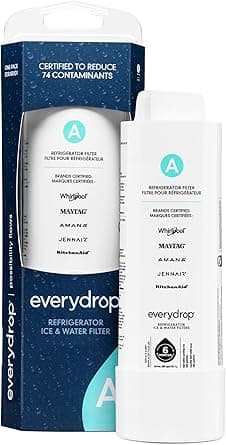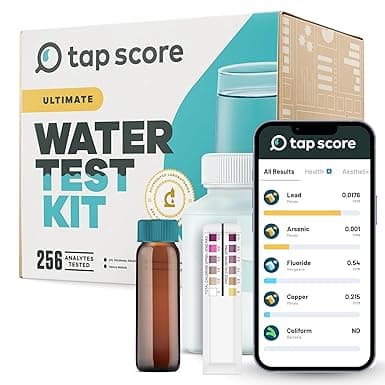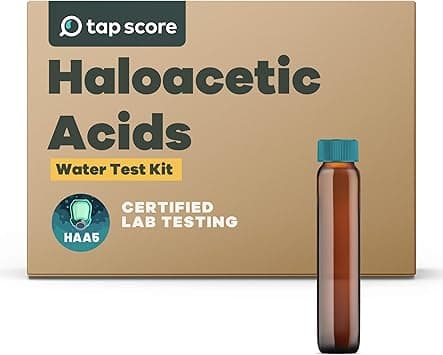Sayreville Tap Water Quality Report
Sayreville's water has 4 contaminants above EPA MCLGs. We recommend using a certified water filter.
Utility
SAYREVILLE W DEPT
People Served
43,761
MCL Violations
0
Last Updated
2024-03-29
Is Sayreville Tap Water Safe to Drink?
Sayreville's water has 4 contaminants above EPA health-based guidelines. We strongly recommend using a certified water filter to reduce exposure to these contaminants. Check our filter recommendations below for NSF-certified options that can remove the specific contaminants found in Sayreville's water.
The data below shows test results from SAYREVILLE W DEPT, which serves 43,761 people in the Sayreville area. Water quality testing is conducted regularly and reported to the EPA. This report was last updated 2024-03-29.
Sayreville Water Quality Test Results
Key Water Quality Metrics
Contaminants Detected
⚠️ Contaminants Above EPA MCLG (4)
Perfluorooctanoic acid
What is Perfluorooctanoic acid?
Perfluorooctanoic acid (PFOA) is a synthetic chemical that belongs to a group of chemicals known as per- and polyfluoroalkyl substances (PFAS). It is used in various industrial applications and consumer products for its water- and grease-resistant properties.
Health Effects
Exposure to PFOA has been linked to several health issues, including developmental effects in fetuses, increased cholesterol levels, liver damage, thyroid disease, and certain types of cancer.
Affected Organs
Common Sources
Perfluorooctanesulfonic acid
What is Perfluorooctanesulfonic acid?
Part of a class of synthetic compounds known as per- and polyfluoroalkyl substances (PFAS) widely used to make products more resistant to stains, water, and grease. It is found in fabrics, fire-fighting foams, cleaning products, hydraulic fluids, metal plating, and paper. Although PFOS production has been phased out in the US, exposure is still a major concern due to its high degree of persistence in the environment and in the body as well as the use of legacy products and imported goods. Many adverse health effects have been linked to PFOS exposure, including developmental, liver, and immunological problems and increased cancer risk. EPA has found that there is suggestive evidence that PFOS is a human carcinogen.
Health Effects
As with many PFAS compounds, research into the health effects of PFOS is rapidly evolving. Epidemiological studies have shown associations between elevated PFOS levels and increased total and low-density lipoprotein cholesterol ('bad cholesterol') as well as immune toxicity (decreased antibody response). Animal studies indicate that PFOS exposure is related to adverse developmental effects, liver toxicity, immune toxicity, and an increased risk of liver and pancreatic cancer.
Affected Organs
Common Sources
Bromodichloromethane
What is Bromodichloromethane?
Member of trihalomethanes (THMs) that form in water treated with chlorine
Health Effects
Health protective benchmarks for BDCM are based on carcinogenicity and liver toxicity observed in animal studies. The EPA has classified BDCM as a probable human carcinogen. Results from animal studies also suggest that kidney, immune system, spleen, and developmental toxicity are associated with exposure to BDCM. BDCM has been shown to produce DNA changes (genotoxicity) in laboratory studies.
Affected Organs
Common Sources
Dichloroacetic Acid (DCA)
What is Dichloroacetic Acid (DCA)?
Member of haloacetic acids (HAAs) that form as byproducts when chlorine reacts with organic matter
Health Effects
Health protective benchmarks for DCA are based on evidence of increased cancer risk and liver toxicity observed in animal studies. Adverse effects to the male reproductive system have also been associated with elevated levels of DCA in animal studies. The EPA classifies DCA as a likely human carcinogen.
Affected Organs
Common Sources
Understanding the Data
This data comes from your local water utility testing. The bar charts compare detected levels against EPA's Maximum Contaminant Level Goal (MCLG). Contaminants above the MCLG are shown by default and may require filtration. All other tested contaminants are within safe levels and can be viewed by expanding the section above.
Recommended Water Filters for Sayreville
Based on Sayreville's water quality data, these NSF-certified filters are recommended to remove contaminants above EPA MCLGs.

Whirlpool Corporation
W11256135
NSF Certified:
Capacity
1001 gal
Filter Life
3 mo
Flow Rate
0.7 gpm
Removes 19 contaminants:
1,2 Dichlorobenzene, 1,4 Dichlorobenzene, 2,4-D, Asbestos, Atrazine +14 more

Whirlpool Corporation
W11569861
NSF Certified:
Capacity
1001 gal
Filter Life
3 mo
Flow Rate
0.52 gpm
Removes 22 contaminants:
1,2 Dichlorobenzene, 1,2,4 Trichlorobenzene, 1,4 Dichlorobenzene, 2,4-D, Asbestos +17 more

iSpring Water Systems LLC
RCC7
NSF Certified:
Daily Production
21.04 gpd
Removes 1 contaminants:
Total Dissolved Solids

iSpring Water Systems LLC
RCC7-BLK
NSF Certified:
Daily Production
25.41 gpd
Removes 9 contaminants:
Asbestos, Barium, Cadmium, Chromium (Total), Copper +4 more
Verify Your Water Quality with Independent Testing
With 4 contaminants above EPA health guidelines, independent laboratory testing provides a second opinion and can track changes over time.

SimpleLab
Advanced Home Water Test
$369
Most comprehensive home water test including all standard tests plus additional parameters for ultimate peace of mind.

SimpleLab
Standard Home Water Test
$232
Comprehensive water analysis testing over 200 contaminants including bacteria, heavy metals, and chemical compounds.

Tap Score
Haloacetic Acids (HAA9) Test
$275
Tests for disinfection byproducts formed when chlorine reacts with organic matter in water treatment.
Frequently Asked Questions About Sayreville Tap Water
Sayreville's water has 4 contaminants above EPA MCLGs. We strongly recommend using a certified water filter to reduce exposure to these contaminants. Check our filter recommendations below for NSF-certified options that can remove the specific contaminants found in Sayreville's water.